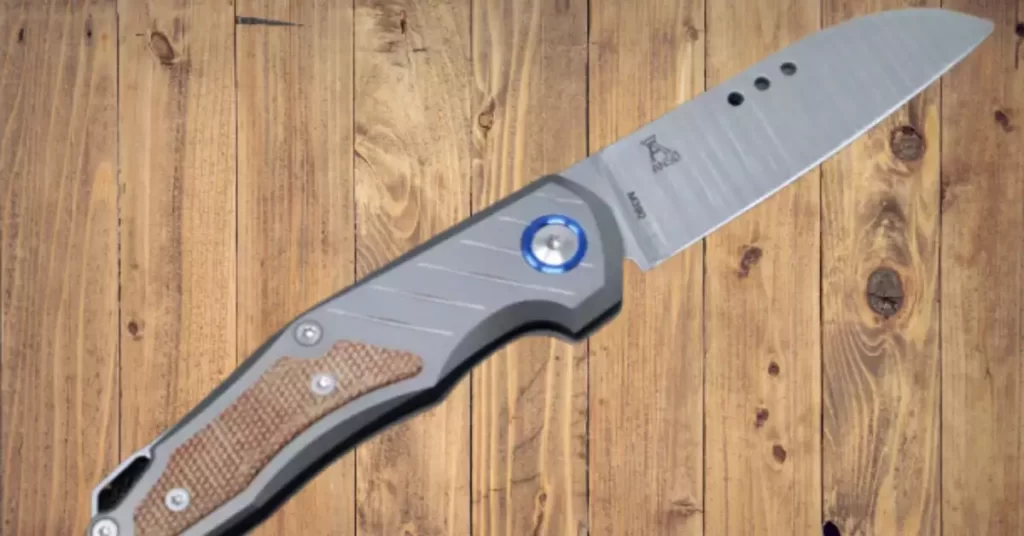You’re standing in front of a dazzling array of knives, struggling to decide which one to add to your collection. You’ve narrowed it down to two options that have caught your eye: one with 20cv steel and another with m390 steel.
But what sets them apart? In this comprehensive guide, we’ll dive deep into the world of 20cv and m390 steels, compare their properties, and help you determine which one is the perfect fit for your needs.
Overview of 20cv and m390
20cv Steel
20cv is a premium stainless steel that boasts impressive toughness, wear resistance, and corrosion resistance. It is a powder metallurgy tool steel, which means it is produced by combining and compressing metal powders at a high temperature.
This method results in an ultra-fine grain structure, significantly improving the steel’s overall performance.
m390 Steel
m390, also known as Microclean, is a high-performance stainless steel that stands out for its exceptional wear resistance, edge retention, and corrosion resistance.
Like 20cv, it is a powder metallurgy tool steel, manufactured using a similar process that results in an incredibly uniform and fine grain structure.
Chemical Composition
Both 20cv and m390 are known for their high-quality composition, which contributes to their performance. Here’s a comparison of the key elements in each steel:
| Element | 20cv (%) | m390 (%) |
| Carbon | 1.9 | 1.9 |
| Chromium | 20.0 | 20.0 |
| Vanadium | 4.0 | 4.0 |
| Tungsten | 0.6 | 0.6 |
| Molybdenum | 1.0 | 1.0 |
As you can see, 20cv and m390 have nearly identical chemical compositions, which is why they share many similar properties.

Hardness, Wear Resistance, and Edge Retention
20cv and m390 both have a Rockwell hardness of around 60-62 HRC, making them incredibly hard steels.
This high hardness translates into excellent wear resistance and edge retention, which means that knives made from these steels will stay sharp longer and resist abrasion exceptionally well.
While both steels have top-notch wear resistance and edge retention, m390 has a slight advantage in terms of toughness. This means that m390 is less likely to chip or break under heavy use or impact.
However, the difference in toughness between the two steels is minimal and may not be noticeable for most users.
Corrosion Resistance
Thanks to their high chromium content (20%), both 20cv and m390 exhibit exceptional corrosion resistance.
This makes them ideal choices for knives that will be used in wet or corrosive environments, such as fishing or marine applications. Between the two, their corrosion resistance is nearly equal, with no clear winner in this category.
Ease of Sharpening
Given their high hardness, both 20cv and m390 can be more challenging to sharpen than softer steels. However, with the right sharpening equipment and technique, it is possible to maintain a razor-sharp edge on both types of steel.
It’s worth noting that, due to their excellent edge retention, knives made from 20cv or m390 will need sharpening less frequently than those made from softer steels. Between the two, there is no significant difference in ease of sharpening.
Applications
20cv and m390 steels are suitable for a wide range of applications, including but not limited to:
- Everyday carry (EDC) knives
- Outdoor and camping knives
- Tactical and military knives
- Kitchen and culinary knives
Custom knives
Given their similarities in performance, either steel is an excellent choice for high-quality, durable knives that require exceptional wear resistance, edge retention, and corrosion resistance.
Price Comparison
Generally, knives made from 20cv and m390 steels are considered premium and tend to be more expensive than those made from lower-grade materials.
While the price difference between 20cv and m390 knives can vary depending on the brand, model, and other factors, they are often similarly priced.
The cost of a knife will depend more on its overall design, materials, and craftsmanship rather than the specific steel used.
FAQs
Can 20cv and m390 be used interchangeably?
In most cases, yes. Given their similar properties, 20cv and m390 can often be used interchangeably without any significant impact on performance.
Which steel is better for kitchen knives, 20cv or m390?
Both 20cv and m390 are excellent choices for kitchen knives due to their exceptional edge retention, corrosion resistance, and wear resistance. The decision will likely come down to personal preference, design, and price.
Final Verdict
Both 20cv and m390 are high-performance steels that offer outstanding wear resistance, edge retention, and corrosion resistance.
While m390 has a slight advantage in terms of toughness, the difference is minimal and may not be noticeable for most users.
Ultimately, the choice between 20cv and m390 will come down to factors such as personal preference, design, and price.
Whichever steel you choose, you can be confident that you’re investing in a premium, high-quality knife.
